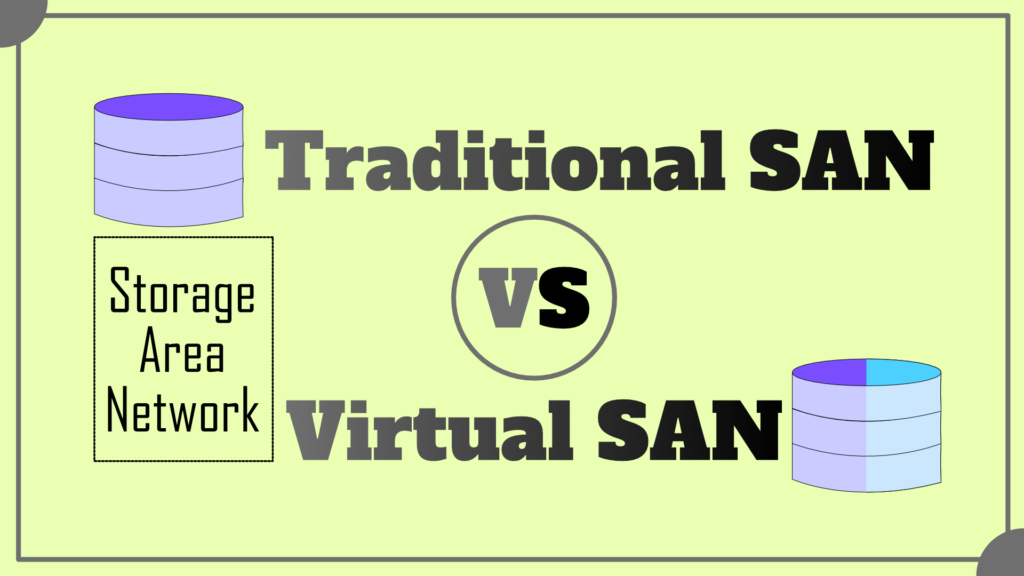Traditional SAN Technology or vSan – A Thorough Comparison
A traditional storage area network from a centralized storage array separates the storage resources and is a reliable high-speed working network. On the other hand, VMware is also referred to as vSan or Virtual San. In vSan, the help from various networks across the servers is collected.
A lot of people wonder, what is vsan? It is Virtual Storage Area Network. Further details are as follows.

Distinguishing Factors Between SAN Technology and VMWARE vSan
Both technologies are briefly discussed below to help you learn and distinguish the difference between each.
VMWARE vSan
- A vSan makes it easy to make the storage manager turn unused storage space in a virtual server of networks into a Storage Area Network. It can isolate the traffic within specific parts of a Storage Area Network and act as a logical part of it. Via Virtualization, it enhances the abilities of the Traditional SAN.
- It is an Ethernet-based block-I/O platform. It makes the administrative work easy and reduces costs compared to the traditional SAN. It can sometimes be challenging to scale. A logical unit number system of virtual disks is used by Storage Area Network with a server-based file system.
- Instead of separating storage like a traditional SAN, VMware vSan allows administrators to keep hold distributed across servers and logically collect those resources.
- Organizations can use the already available storage with VMware vSan. As long as the VMware’s hardware compatibility list has storage, you wouldn’t need to buy extra hardware, which becomes cost-effective. So, it is practical to use local storage. At least a 1 Gb Ethernet network interface card and either a serial-attached SCSI adapter or a RAID controller with at least one flash disk are needed. VMware vSAN can use solid-state drives for reading/write caching and hard disks for primary storage. That is all that VMware vSAN needs.
Traditional SAN Technology
- Improvement in Disk utilization is one of the significant benefits of a Storage Area Network. The centralized storage system allows you to manage everything as a single entity. Several pools of resources for storage placed at network levels can be called by the IT managers to assign such storage to any server application. High-End security of critical data by enabling disaster recovery via replication is offered to various businesses by Storage Area Network.
- Only large enterprises use Storage Area Network, but SMBs can also take advantage of such massive storage. It is cost-effective and budget-friendly to use direct attach storage (where storage disks are connected to a single server) for small businesses. But, as the storage demand increases, so will the cost.
- For enterprises, direct-attach storage is no longer advisable, especially in the face of mission-critical systems, strict privacy laws, and the explosive growth of digital data. As the digital information grows exponentially, flowing through business entities in today’s globalized and enhanced marketplace, enterprises and organizations need to consider a centralized storage network that can meet their current and future needs.
Wrapping it Up!
All of the significant differences between traditional SAN and vSAN are mentioned above. Now you know all about both and can decide for yourself. We hope the distinguishing factors help you decide which technology might be the best fit for your business needs.